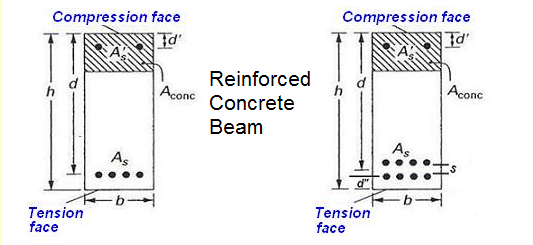

To validate the experimental results, analytical study was also done using finite element analysis (FEM). In this study the ultimate load carrying capability, the load-axial shortening, load-lateral deformation, load- strain and crack width were studied. The experimental investigation involved the study of the axial compressive behaviour of RC column of grade M30 with and without M-sand. To retain the natural resource such as natural sand an attempt is made in this paper by partially replacing the natural sand with M-Sand. The present study focuses on evaluating the axial compression characteristics of concrete, in which Manufactured Sand (M-Sand) is used as a partial and full replacement for natural sand. Load deflection curve was calculated by using FEA at same location as the Experimental test of beam. Comparison of load defection curve at midspan & pattern of failure of beam. Here, a linear analysis is considered throughout the study by assuming that there is a perfect bonding between reinforcement and the steel. The Rectangular beams with tensile reinforcement and shear reinforcement have been analyzed using a finite element (FE) model in ANSYS. ANSYS is a general purpose finite element modelling package for numerically solving a wide variety of problems which include static/dynamic structural analysis (both linear and nonlinear), heat transfer and fluid problems, as well as acoustic and electromagnetic problems.

The finite element method is a numerical analysis technique for obtaining approximate solutions to a wide range of engineering problems. Experimental results of reinforced lightweight concrete beams are compared with Finite Element Analysis of RC beam using ANSYS software. This study includes performance of reinforced lightweight concrete beam strengthened with GFRP. Up to 2% fiber content as shear span to depth ratio changed from 0.80 to The test result showed an increase in the ultimate load There is a considerable increase in the ultimate shear strength of steelįiber reinforced concrete corbels with the addition of steel fibers for

Test results showed that,Īddition of steel fibers up to 2 percent improves both shear strength andĭuctility of the tested corbels, and results in a more ductile failure mode. One of the experimental test results with 1% fiber Strength (fcu), area of main steel reinforcement (As) and presence ofīoth ACI Building Code provisions and Fattuhi equation agree with the Shear span-to-depth ratio (a/d), with constant concrete compressive The test variables were steel fiber content (Vf %) and Study performance of steel fiber reinforced concrete corbels with and Seven full-scale reinforced concrete corbel specimens were tested to


 0 kommentar(er)
0 kommentar(er)
